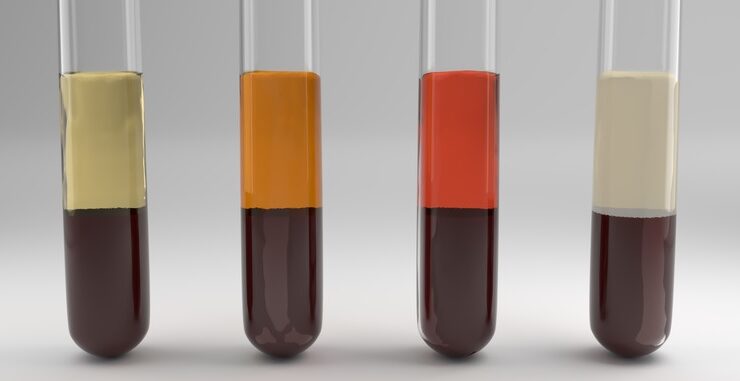
I’ll be glad to answer this clinical chemistry question for you. A serum index is a set of measurements or markers found in the blood serum that are used to track the quality of a blood sample or assess different health conditions. In clinical chemistry, these indices are frequently looked at to get information about a patient’s health or to find things that might interfere with lab results.
I’ll assume you’re looking for general information on common serum indices since your question looks like a multiple-choice one, but the post doesn’t give any choices. I can help you further if you have any specific choices you’d like me to evaluate.
1. What is a Serum Index?
In clinical chemistry, a serum index is a set of quantitative or qualitative measurements taken from blood serum to evaluate particular biochemical markers or to find possible interferences in lab tests. For example, these indices can indicate if there are issues like hemolysis, icterus (bilirubin), or lipemia (lipids), or they can directly measure health-related markers like glucose or cholesterol levels.
2. Common Serum Indices in Clinical Chemistry
In clinical chemistry, serum indices are usually broken down into two groups: interfering indices, which measure the quality of the sample, and biochemical markers, which measure health states. I’m going to talk about some of the most popular indices in both groups below.
Interference Indices
We use these indicators to evaluate the quality of the serum sample and identify potential issues that could alter the test results.
- Hemolysis Index: Measures the level of red blood cell breakdown in the sample, which releases hemoglobin and can interfere with certain tests.
- Icterus Index: Assesses the level of bilirubin in the serum, indicating jaundice or liver dysfunction, and can interfere with optical measurements.
- Lipemia Index: Evaluates the turbidity caused by high lipid levels in the blood, which can affect light-based measurement techniques in lab analyzers.
Biochemical Markers
These are direct measurements of substances in the serum that help with diagnosis:
- Glucose: A critical marker for diagnosing and monitoring diabetes.
- Cholesterol and Triglycerides: Used to assess cardiovascular risk.
- Blood Urea Nitrogen (BUN) and Creatinine: Indicators of kidney function.
- Liver Enzymes (ALT, AST, ALP): Reflect liver health and function.
- Electrolytes (Sodium, Potassium, Chloride): Essential for assessing fluid balance and metabolic status.
3. Importance of Serum Indices
Serum indices play a crucial role in ensuring the accuracy of test results and in diagnosing or monitoring health issues. As an example:
- Lab workers utilize interference indices to determine the suitability of a sample for analysis. If the hemolysis index is high, you might need to draw blood again to make sure the readings are correct.
- Biochemical markers, such as glucose or cholesterol, provide doctors clear information about a patient’s health, which helps them decide how to treat them.Healthcare professionals can correctly read lab data and make clinical choices when they are aware of these indices.
4. Examples of Common Serum Indices
Here are some examples of serum indices commonly tested in clinical chemistry labs, along with their respective interpretations:
Hemolysis Index: A high number indicates that red blood cells have broken down, which can release substances that mess up tests like potassium or lactate dehydrogenase (LDH) measurements.
Glucose: High glucose levels can mean you have diabetes mellitus, and low glucose levels could mean you have hypoglycemia, both of which require rapid clinical care.
Creatinine is used to figure out the glomerular filtration rate (GFR), which is a key measure of how well the kidneys are working. High levels may be a sign of kidney damage.
Serum Indices Summary Table
| Serum Index | Category | Purpose | Clinical Relevance |
|---|---|---|---|
| Hemolysis Index | Interference | Detects red blood cell breakdown | Ensures sample quality; prevents test errors |
| Icterus Index | Interference | Measures bilirubin levels | Detects jaundice; assesses liver function |
| Lipemia Index | Interference | Evaluates lipid turbidity | Prevents interference in optical measurements |
| Glucose | Biochemical Marker | Measures blood sugar levels | Diagnoses and monitors diabetes |
| Creatinine | Biochemical Marker | Assesses kidney function | Indicates renal health or impairment |
| Cholesterol | Biochemical Marker | Evaluates lipid profile | Assesses cardiovascular risk |
5. Summary
In clinical chemistry, a common serum index can mean tests that check the quality of the blood sample (like hemolysis, icterus, or lipemia indices) or specific blood markers (like glucose, creatinine, or cholesterol). These indices are crucial for making sure that test results are correct and giving doctors information about a patient’s health. If your question gives you specific choices, like a list of indices, please let me know. That way, I can help you find the right answer more precisely.
It is generally known that glucose for metabolic health, creatinine for kidney function, and the hemolysis index for sample quality measurement are some of the most common serum indices in clinical chemistry. In clinical diagnostics and regular blood research, these are crucial.
I’d be happy to make this answer even better if you provide me more information or a list of options. Tell me!


